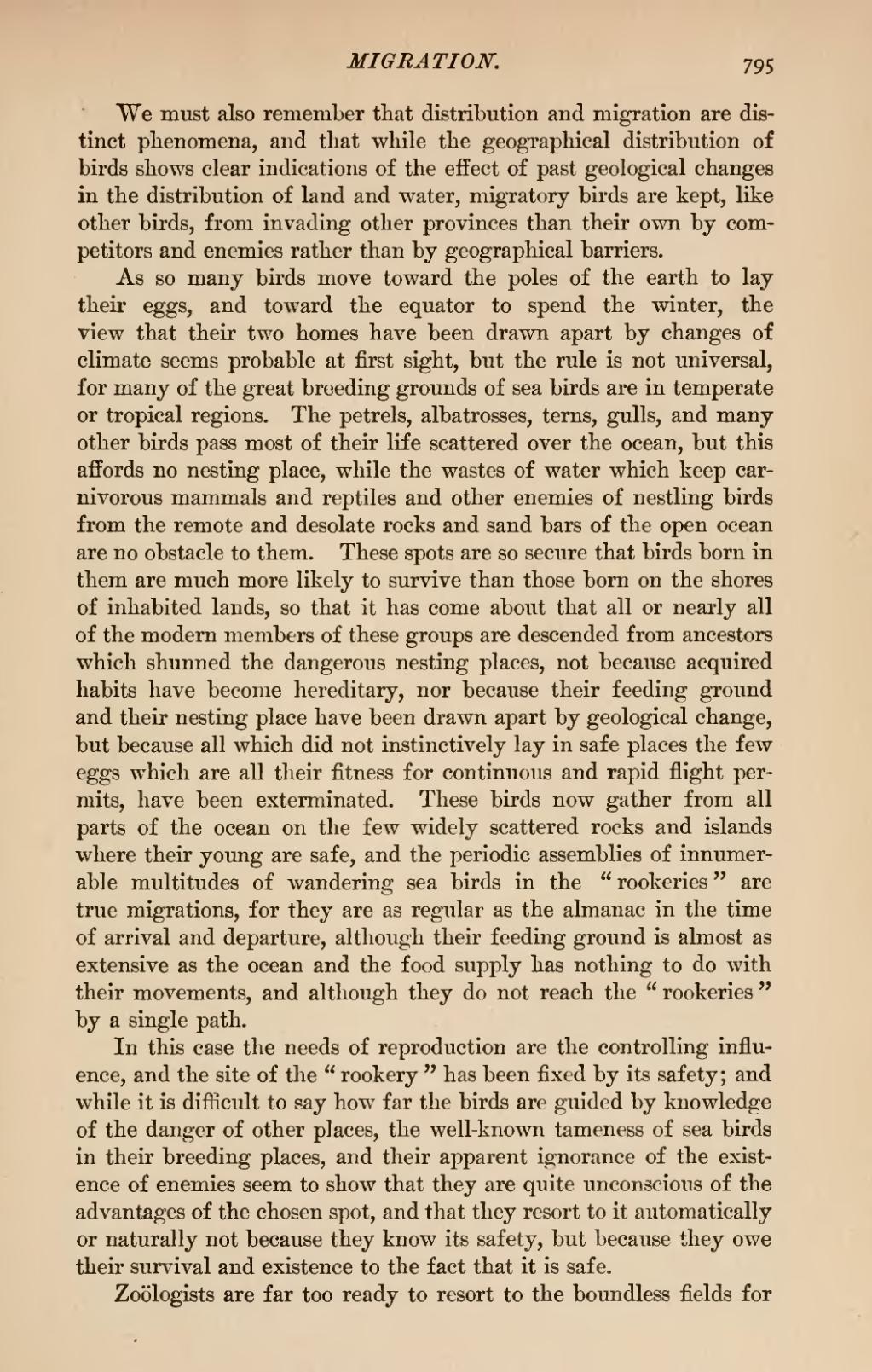We must also remember that distribution and migration are distinct phenomena, and that while the geographical distribution of birds shows clear indications of the effect of past geological changes in the distribution of land and water, migratory birds are kept, like other birds, from invading other provinces than their own by competitors and enemies rather than by geographical barriers.
As so many birds move toward the poles of the earth to lay their eggs, and toward the equator to spend the winter, the view that their two homes have been drawn apart by changes of climate seems probable at first sight, but the rule is not universal, for many of the great breeding grounds of sea birds are in temperate or tropical regions. The petrels, albatrosses, terns, gulls, and many other birds pass most of their life scattered over the ocean, but this affords no nesting place, while the wastes of water which keep carnivorous mammals and reptiles and other enemies of nestling birds from the remote and desolate rocks and sand bars of the open ocean are no obstacle to them. These spots are so secure that birds born in them are much more likely to survive than those born on the shores of inhabited lands, so that it has come about that all or nearly all of the modern members of these groups are descended from ancestors which shunned the dangerous nesting places, not because acquired habits have become hereditary, nor because their feeding ground and their nesting place have been drawn apart by geological change, but because all which did not instinctively lay in safe places the few eggs which are all their fitness for continuous and rapid flight permits, have been exterminated. These birds now gather from all parts of the ocean on the few widely scattered rocks and islands where their young are safe, and the periodic assemblies of innumerable multitudes of wandering sea birds in the "rookeries" are true migrations, for they are as regular as the almanac in the time of arrival and departure, although their feeding ground is almost as extensive as the ocean and the food supply has nothing to do with their movements, and although they do not reach the "rookeries" by a single path.
In this case the needs of reproduction are the controlling influence, and the site of the "rookery" has been fixed by its safety; and while it is difficult to say how far the birds are guided by knowledge of the danger of other places, the well-known tameness of sea birds in their breeding places, and their apparent ignorance of the existence of enemies seem to show that they are quite unconscious of the advantages of the chosen spot, and that they resort to it automatically or naturally not because they know its safety, but because they owe their survival and existence to the fact that it is safe.
Zoölogists are far too ready to resort to the boundless fields for

